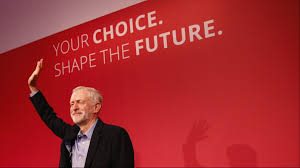The environment should not be, as Corbyn put it in his recently launched energy and climate manifesto, solely the preserve of “scientists, enthusiasts and activists.”

The environment affects all of us, every day.
But, much like our banking, we’ve become detached from the reality of the biggest issue facing humanity, and how we might be able to influence it.
Just last week, a group of MPs under the banner of the Energy and Climate Change Committee warned the Government: “the UK will miss its 2020 renewable energy targets without major policy improvements. Failing to meet these would damage the UK’s reputation for climate change leadership. The Government must take urgent action on heat and transport to renew its efforts on decarbonisation.”
While all this goes on, the Big Six energy suppliers have for years been happily collecting our pennies, taking away our paper bills (another reminder to switch away from them, hey?) and pretty much paying only lipservice to the idea of a greener energy supply.
Corbyn wants to increase public understanding and energise the political debate around the environment and a greener energy supply, and has pointed to a need for more than facts and figures to do this. He wants to see a programme that “resonates with people’s everyday experiences, offering not just warnings but opportunities and improvement.”
Whatever your views on Corbyn, it would be hard to disagree with the need to bring the energy debate right back to the people.
So where can you start?
Well, community energy – featuring widely in Corbyn’s plans – delivers exactly what we need. An energy supply rooted in our own back yard. One over which we have more control, and one from which we – not the Big Six – have the chance to profit.
As many as seven million households in Britain are struggling to pay their bills because of spiralling charges; whereas the Big Six have seen their profits rise more than tenfold since 2007.
In contrast, the community energy movement has gone from strength to strength – for the good of the people. Plymouth Energy Community, for example, has seen memberships grow from 100 in 2013 to more than 1,200 members today. It has also been able to provide 30 schools and community buildings with free solar panels as well as commissioning a 4.1MW solar array which now generates enough clean energy to meet the annual needs of 1,000 local homes.
This is despite a barrage of subsidy changes and ending of certain tax breaks, like EIS, thanks to the ungreenest “greenest Government ever”.
Meanwhile, more established renewable energy companies, such as Good Energy, have proven that renewables can weather all sorts of storms. Its supply is 100 per cent renewable and its aim is to transform the UK energy market by helping homes and businesses to be part of a sustainable solution to climate change.
It offers a number of ways to be part of the move towards a low-carbon future and sees its growing customer base as ‘part of a community of homes and businesses that either: by switching to Good Energy buys 100 per cent renewable electricity and green gas; generates renewable power in their own homes; or invests directly in renewable power as a shareholder of Good Energy. It says: “We hope to inspire an energy revolution in the UK, which breaks the strangle-hold of the big old-fashioned energy generators and move to a cleaner, greener future.”
Good Energy‘s CEO Juliet Davenport says: “We’re teetering on a cliff edge of losing our global reputation for leadership on climate change. These (renewable energy targets) are EU targets that will be missed, so now the Government needs to show the world that Brexit doesn’t mean they’re throwing the towel in on tackling climate change.”
Let’s hope that community energy begins to take root in Parliament as well as closer to home.
Georgina Matthews at positive investment platform Ethex agrees: “Community energy may not be on the front pages of national business sections, but for those interested in boosting local economies, cutting carbon dioxide emissions and improving energy security, such projects are a dream come true and a model of what the energy market could be in the future. And the projects have been paying their investors a decent income too.”
Emma Bridge, CEO of Community Energy England adds: “The range of community energy projects with current share offers really demonstrates the broad benefits that community energy brings to a local area as well the high level of support it has. Whilst the sector starts to look for ways to adjust to the new policy regime, it is great to see the current pipeline of projects coming to fruition.”
So whether or not Corbyn’s dreams come true, there remain plenty of ways to get on board with the growing community energy movement.
One example is Mongoose Energy, which plans to become the UK’s first energy supply company that is majority-owned by community energy groups. Mongoose says, unlike the Big Six, the majority of its profits will be invested in the communities that helped them generate the energy, and will be used to run environmental and social initiatives in those communities.
A good way of supporting the community energy sector could be to invest in a project. Such projects can offer returns of between 3 to 6 per cent per year.
However, investments should be considered for the long term, your capital is at risk and returns are not guaranteed. Therefore you should not invest more than you would be prepared to lose, as these schemes carry risks, which are laid out in the offer document, such as the risk you will not get back all of your capital. As with all community share or bond issues the returns are not guaranteed nor are they covered by the Financial Services Compensation Scheme.




